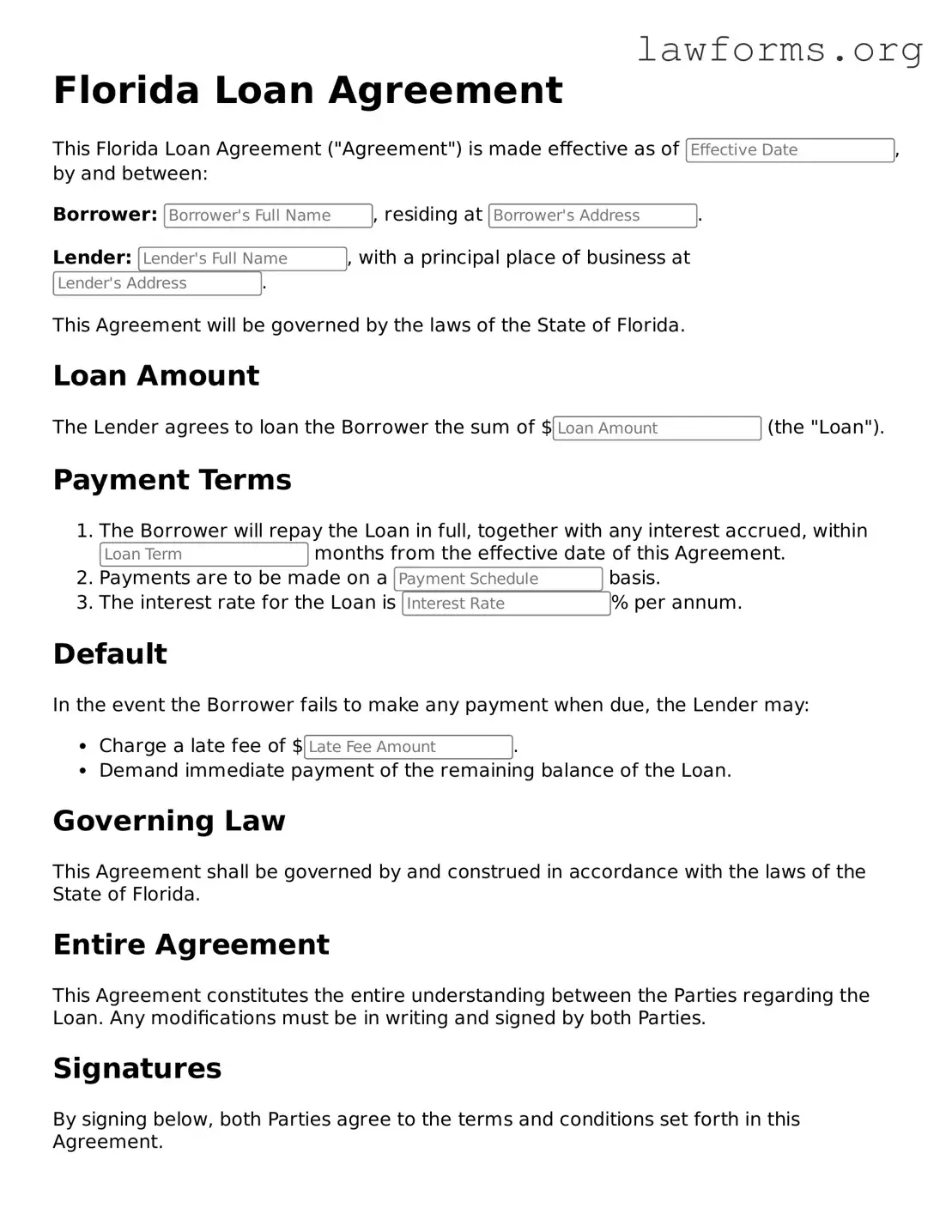Attorney-Approved Loan Agreement Template for the State of Florida
A Florida Loan Agreement form is a legal document that outlines the terms and conditions under which a borrower receives funds from a lender. This form serves to protect both parties by clearly defining repayment schedules, interest rates, and other obligations. To ensure compliance with state laws and to facilitate a smooth transaction, it is essential to fill out the form accurately.
Get started on your loan agreement today by clicking the button below.
Customize Document Online
